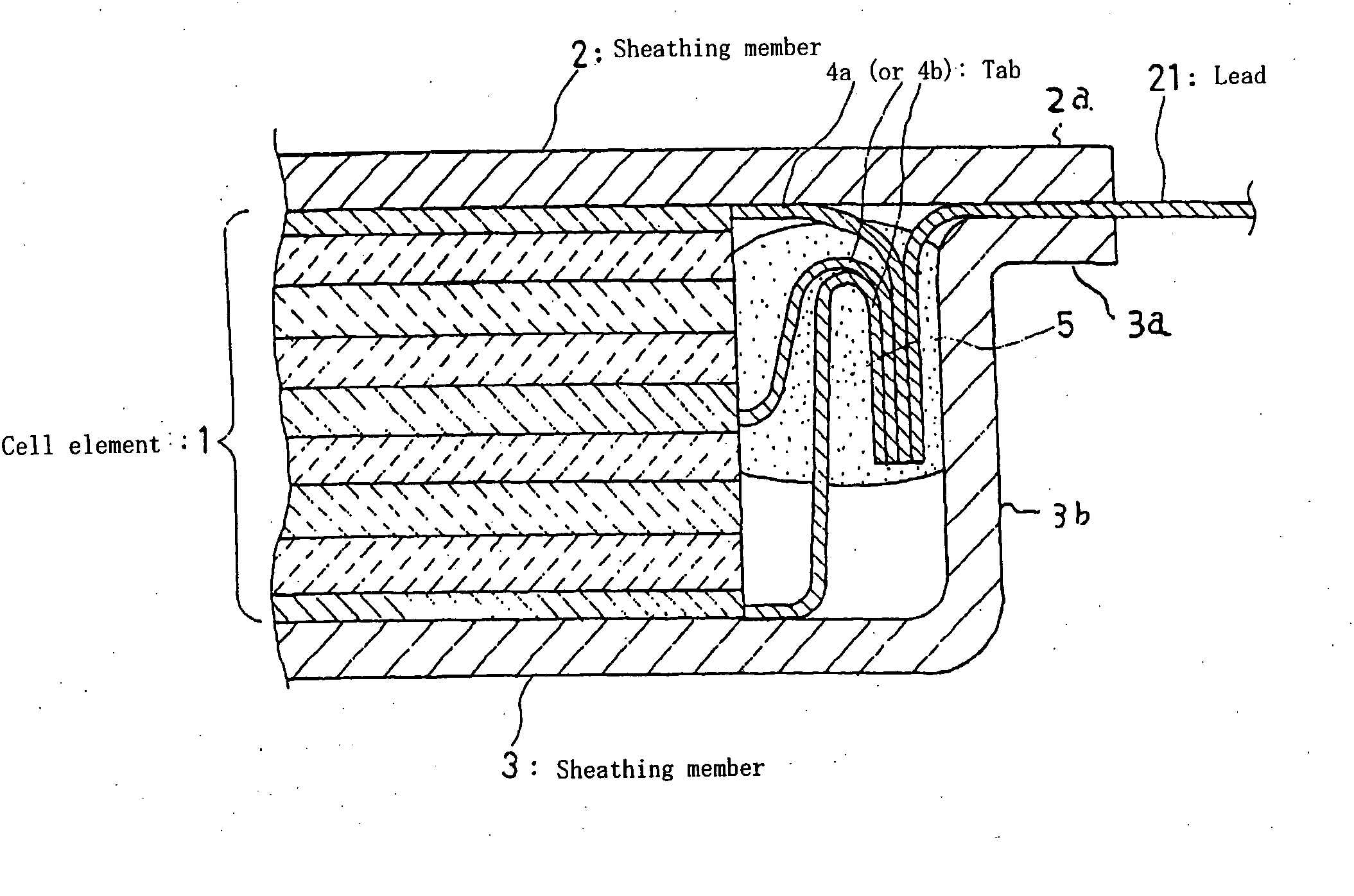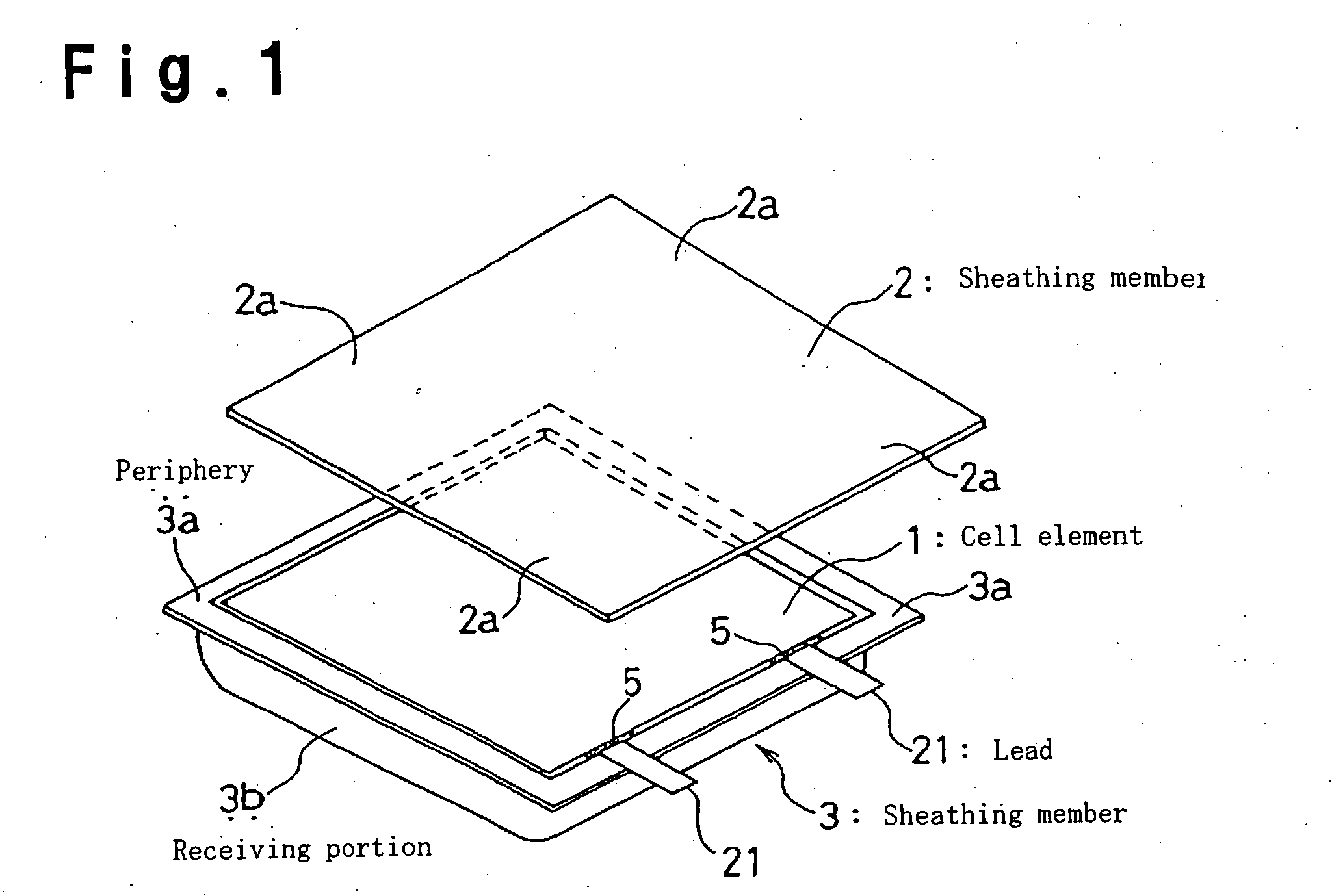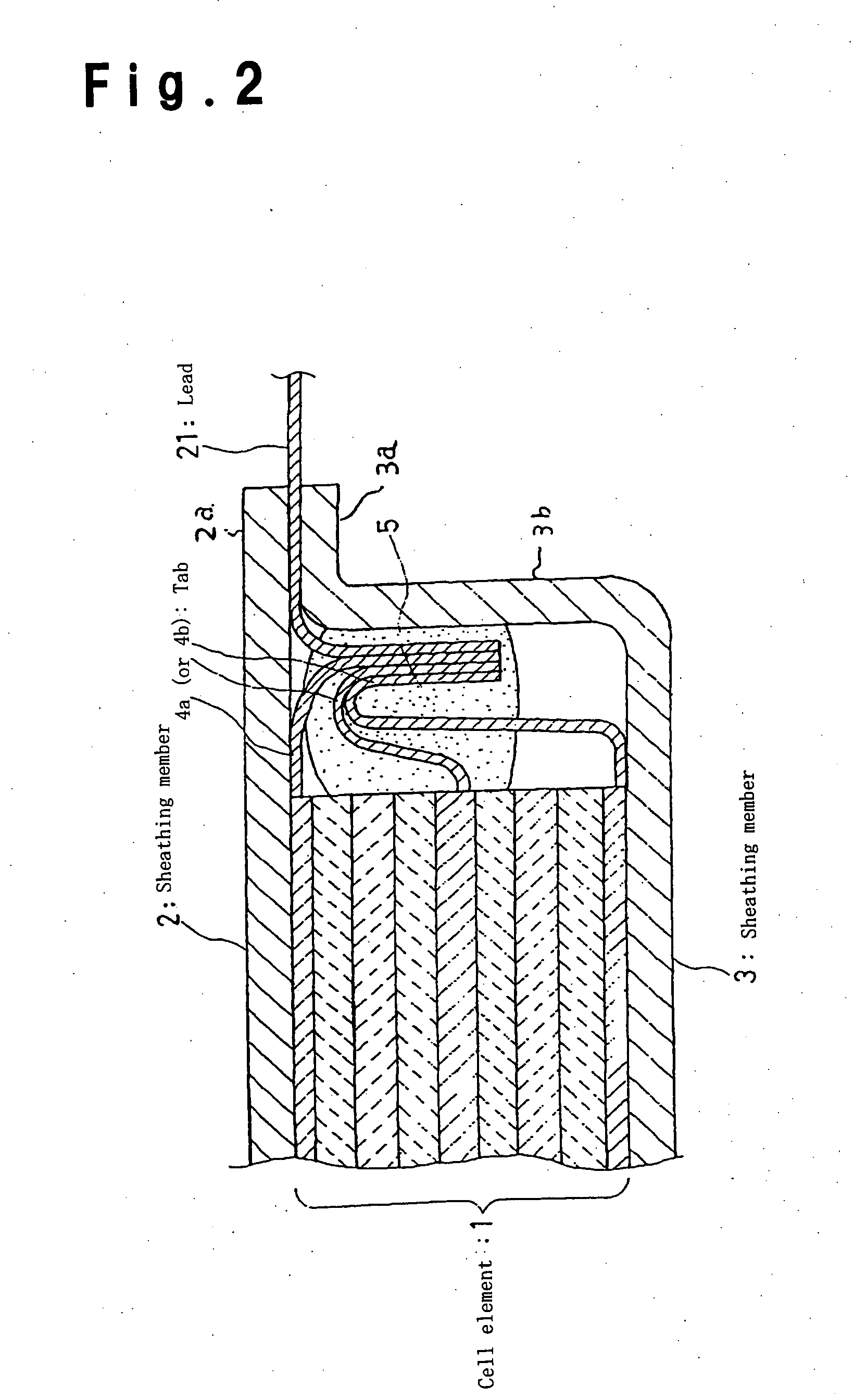Lithium secondary cell
a secondary cell and lithium technology, applied in the field of lithium secondary cells, can solve the problems of poor closeness between the electrodes, deterioration of the cycle characteristics, deterioration of the impregnation with the electrolyte, etc., and achieve the effects of improving the rate characteristics and initial efficiency, improving the cycle characteristics, and remarkably improving the ra
- Summary
- Abstract
- Description
- Claims
- Application Information
AI Technical Summary
Benefits of technology
Problems solved by technology
Method used
Image
Examples
example 1
for Producing Electrolyte Precursor Solution
[0191] 902 parts of a mixed solution of ethylene carbonate and propylene carbonate (volume proportion; ethylene carbonate:propylene carbonate=1:1) containing 1M concentration of LiPF6, 23 parts of phenyl ether, 4.6 parts of a fluorine-type surface active agent (perfluoroalkyl sulfonic imide-ethylene oxide adduct, trade name: Megafac F142P, manufactured by Dainippon Ink & Chemicals, Incorporated), 44 parts of tetraethylene glycol diacrylate, 22 parts of polyethyleneoxide triacrylate, 2 parts of a polymerization initiator and 9 parts of an additive (succinic anhydride) were mixed and stirred for dissolution to form electrolyte precursor solution 1.
example 2
for Producing Electrolyte Precursor Solution
[0192] Electrolyte precursor solution 2 was produced in the same manner as in Example 1 for producing electrolyte precursor solution, except that the amount of the mixed solution of ethylene carbonate and propylene carbonate containing 1M concentration of LiPF6, and the amount of phenyl ether, were changed to be 878 parts and 47 parts, respectively.
example 3
for Producing Electrolyte Precursor Solution
[0193] Electrolyte precursor solution 3 was produced in the same manner as in Example 1 for producing electrolyte precursor solution, except that the amount of the mixed solution of ethylene carbonate and propylene carbonate containing 1M concentration of LiPF6, and the amount of phenyl ether, were changed to be 869 parts and 56 parts, respectively.
PUM
| Property | Measurement | Unit |
|---|---|---|
| Thickness | aaaaa | aaaaa |
| Thickness | aaaaa | aaaaa |
| Boiling point | aaaaa | aaaaa |
Abstract
Description
Claims
Application Information
 Login to View More
Login to View More - R&D
- Intellectual Property
- Life Sciences
- Materials
- Tech Scout
- Unparalleled Data Quality
- Higher Quality Content
- 60% Fewer Hallucinations
Browse by: Latest US Patents, China's latest patents, Technical Efficacy Thesaurus, Application Domain, Technology Topic, Popular Technical Reports.
© 2025 PatSnap. All rights reserved.Legal|Privacy policy|Modern Slavery Act Transparency Statement|Sitemap|About US| Contact US: help@patsnap.com



